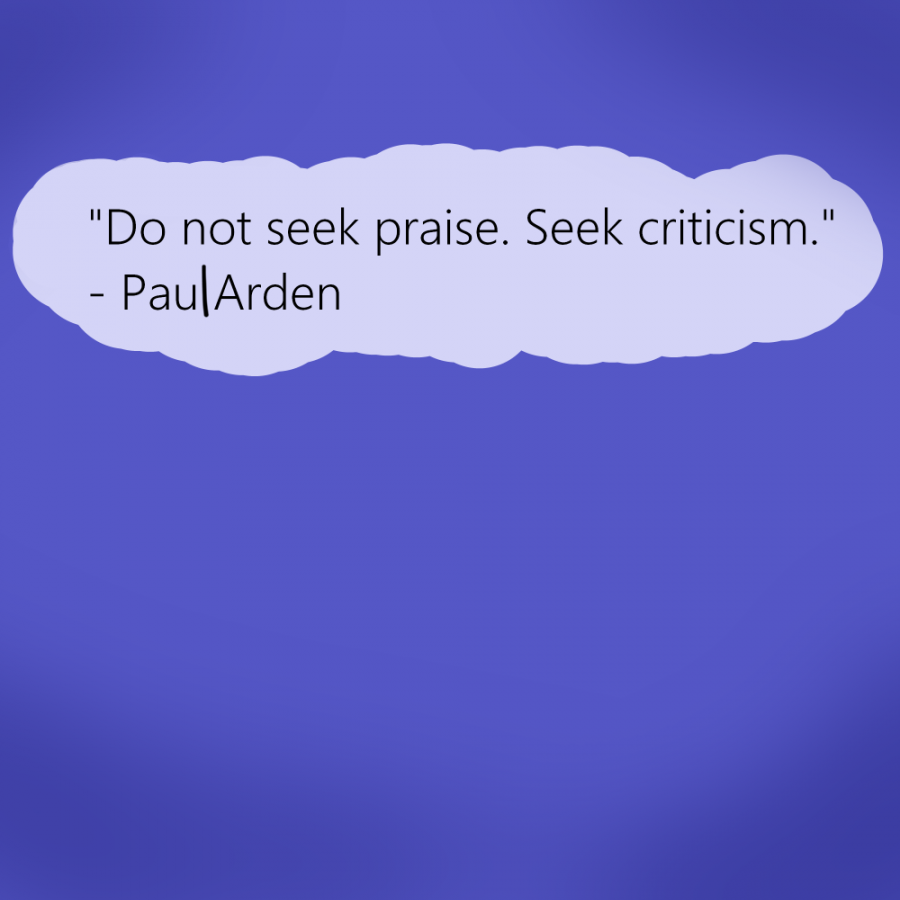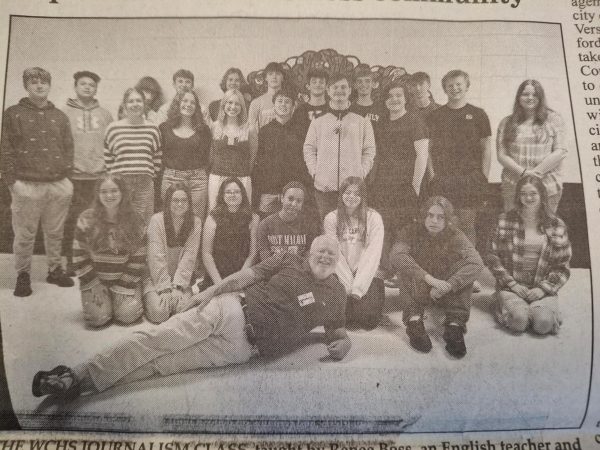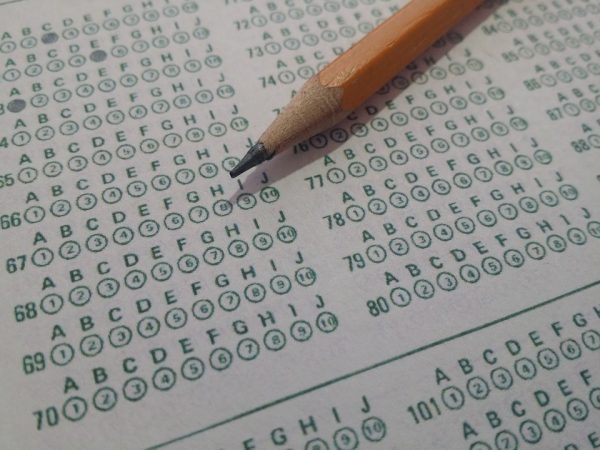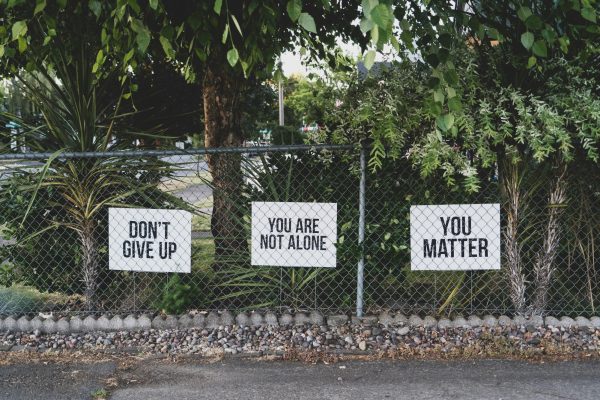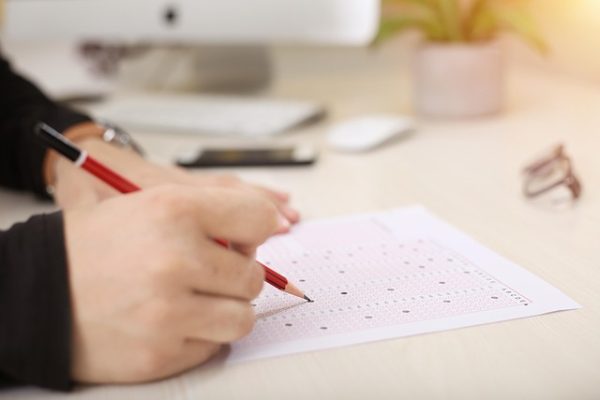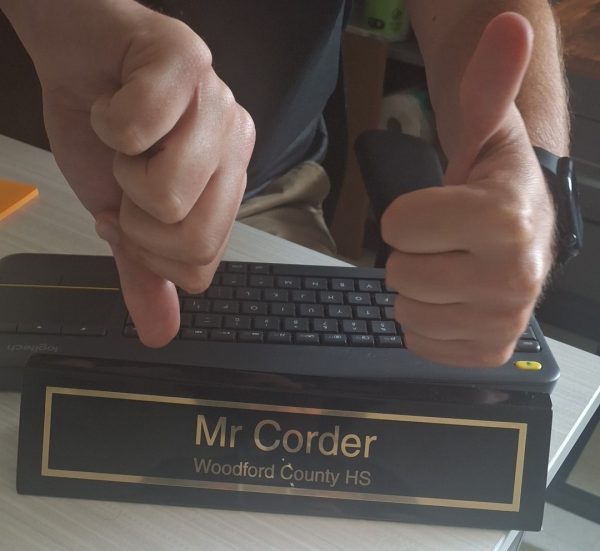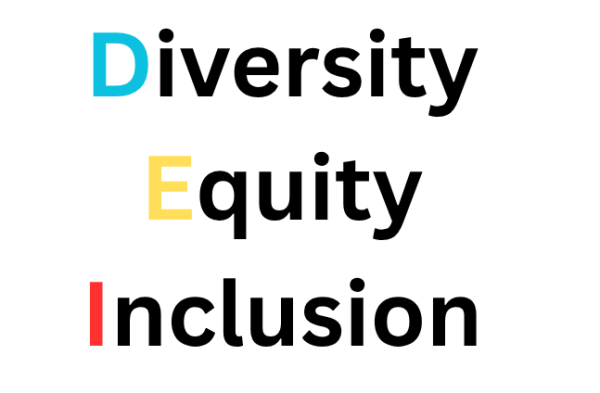How To Take Criticism As An Artist
Artists have always had to swallow down the criticism’s said about their art. Most of the time critics are honest and bold when critiquing a piece of artwork. However, the internet has led way to artists being able to post their own art and have it be seen and shared by the pubic. Not to mention the increase in artistic technology making it that much easier for all artists to create pieces digitally. Many would think that that would make artists have “thicker skin” per se, and be able to take the comments on their art. However, this is not necessarily true.
Being in the art community myself, and seeing the vile things that I have, I greatly disagree with that statement. From a person yelling at someone for giving their opinion on a painting they had, to art critics on the internet having their videos illegally copyright stricked. I also don’t think that it’s entirely the artist’s fault. Most of the time, regular people on the internet praise artists to no end, which is fantastic, but that doesn’t expose said artists to any true criticism, so when someone actually does critique their art, artists sometimes don’t know how to handle it. That’s what I’m going to try to do – give advice on how I personally take criticism on my artwork.
Don’t take it personally.
This is probably the most obvious out of all, yet the hardest to actually do. Depending on how harsh and straight forward the criticism is, it can be hard to listen to it. I recommend taking a deep breath and at least take in what they say and really think about it. Remember, at the end of the day, they just want to help, even if it doesn’t seem like it. It’s only there to help not hurt. Artists are only human and we don’t know everything; you can always learn something.
Have a sense of humor.
Having a sense of humor about your artwork is also what really helps me. Admitting that something is off or strange-looking and being able to make a joke about it really helps your self-esteem as an artist. I feel that dreading over a simple mistake makes you feel worse about your art. However, being able to get over it and move on with a joke shows confidence and self-awareness. Having self-awareness also allows you to admit the wrongs in your own art, without others critiques.
Be confident, not cocky.
There is a huge difference between being confident and cocky. Confidence is being able to present your art to others with an open mind, but a humble heart. Cocky is presenting your art to someone and expecting only praise, and when someone gives some sort of critique, you dismiss it as “they don’t know art” or “they’re being mean”; trying to silence, guilt, or even shame a person for giving their opinion. Not only is this an incredibly toxic mindset to have with your own art, but this also drives people away from it. This could lead an artist to be in their own little bubble of comfort and barely open to improving.
Space out criticism.
Yes, criticism is very important to help an artist improve, but sorting through that criticism to find the things you really need to work on, and the things you can improve on later, is also important. Not only does it mean you are taking the comments on your art seriously, but it also means you are taking the time to sort out through them to have a better understanding of your art through someone else’s eyes. This way you can keep in mind the lesser important critiques and the major ones. I also recommend making a list with two columns, one for majorly needed improvements and one for not as important improvements, which spaces it out and makes is less stressful.
Don’t give up.
Sometimes the frustration of having to patiently wait for yourself as you constantly practice can be a lot. Then when you pile on other things such as school, home, work, and life art can seem more trouble than it’s worth, especially if you’re really looking to get good at it. It can feel like the criticism is just piling up one after another and like you’re doing everything wrong. Also, seeing other art online or at school could make an artist think “I’ll never be able to that,” or “I’ll never be as good as that.” Again, just take a breath and believe in yourself, which may be the hardest thing to do. If art is something you love to do than you must be strong and push through it. Take a break and take care of yourself.
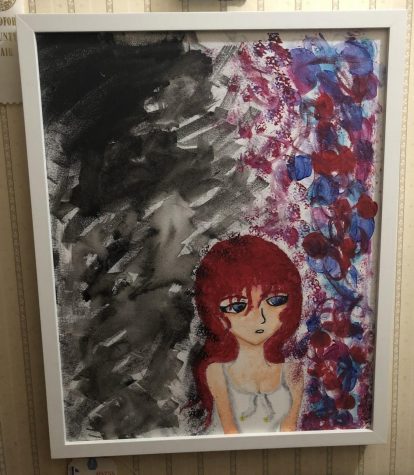
Acrylic painting by Abby Frakes titled “Color light.”
Critique Interview
Mrs. Marks
Glow: The painting has good emotion and reflects something I can relate to in my own life.
Grow: All the color is on one side, so the visual weight is off. Either add a touch of dark to one side or a touch of color to the other.
Anonymous Person
Glow: The girl in the middle is pretty and the color on the right is very vivid.
Grow: I wish the color along the side of her wasn’t overlapping on top.
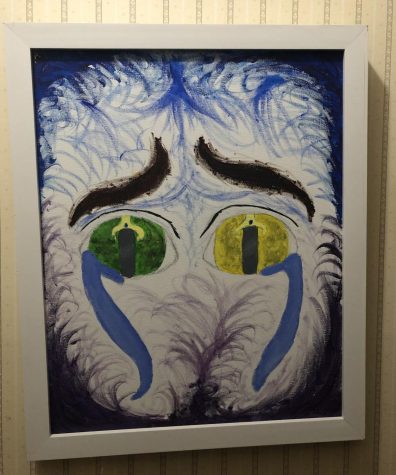
Acrylic painting by Abby Frakes titled “Heart’s Fury.”
Critique Interview
Mrs. Marks
Glow: I like how the picture looks upside down. The picture is interesting and symmetrical.
Grow: The visual weight is also off on this painting. The dark should come from the bottom of the painting and flesh out at the top. The technique of the tears and the feathery edges don’t mix. It looks as if another person painted each section.
Anonymous Person
Glow: The eyes look cool and the color mixing is great. I also like viny edges.
Grow: I would like to see more color near the eyes. I also would like a deeper color on the edges of the eye so they show more.
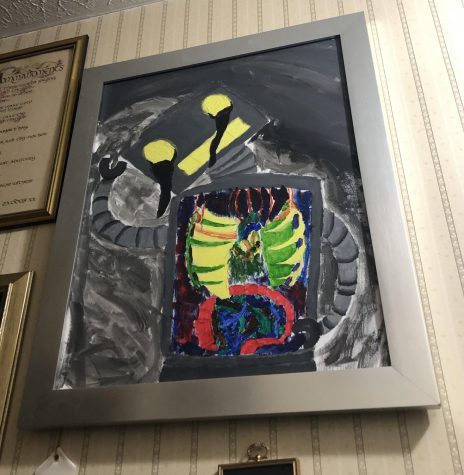
Acrylic painting by Abby Frakes titled “Buttons.”
Critique Interview
Mrs. Marks
Glow: Intriguing. It sparks visual imagery in my imagination. I love the vivid colors inside the robot.
Grow: Again, the visual weight is off. More color amongst the grey would create a better balance.
Anonymous Person
Glow: The inside of the robot in the painting is sharp and gives a major contrast to the rest of the painting. I also like the beaming yellow eyes.
Grow: The painting at the bottom and right edge look messy and the arms I feel should be a little bigger.
Most of the critique that I have received is either on visual weight or neatness. To improve my paintings I will section out the colors I will use for a specific painting and use them according to how much visual weight they will hold. The deeper colors will have more visual weight, so I will evenly distribute them in the painting. To correct my neatness I will pay more attention and use a tinier brush along the edges of objects in my paintings.

Abby is a junior at Woodford County High School. She is 4'11" in height, so she refers to herself as ¨The Midget.¨ She is very excited to be on The...

